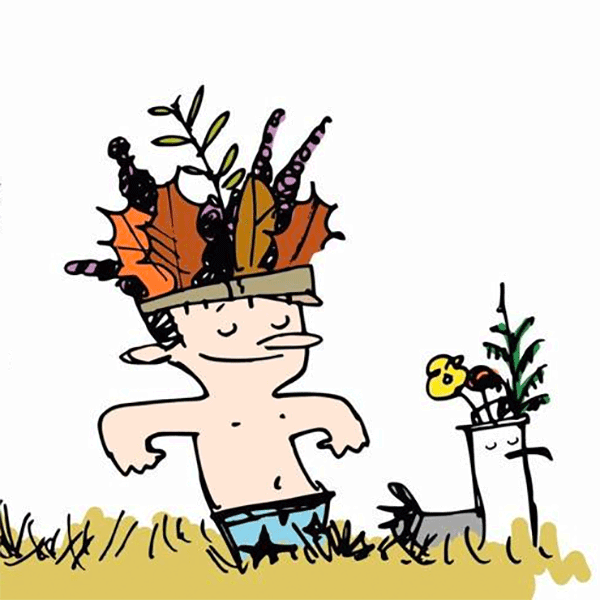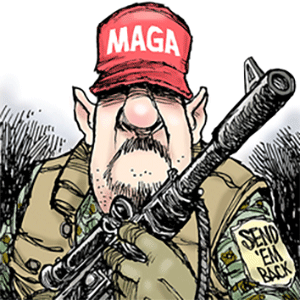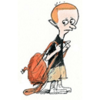Current News
/ArcaMax

Washington state officials rebuke Trump's tough-on-homelessness executive order
SEATTLE — President Donald Trump’s executive order issued Thursday that calls for punishing homeless people living outside, forced treatment for people with substance use and mental health issues and an end to data-proven solutions to getting people into housing has drawn near-unanimous rebuke among local officials and organizations serving ...Read more

Orban urges online campaign against Hungary's surging opposition
Hungarian Prime Minister Viktor Orban said his supporters needed to ramp up a digital movement to seize momentum from the surging opposition party that’s taken a big lead in most polls.
So-called digital civic groups will aim to boost his party’s support before 2026 elections, Orban said in a speech to ethnic Hungarian supporters in Baile ...Read more
NYPD chief probed for allowing on-duty detective to care for cancer-stricken mom
NEW YORK — An unusual arrangement that allowed an NYPD detective to work for nearly a year on a special police detail assigned to her cancer-stricken mother has emerged as the trigger for an Internal Affairs investigation and may well have accelerated the retirement of Brooklyn North Chief Scott Henderson, the Daily News has learned.
...Read more

City by the Bay? More like City by the Brrr! San Francisco is having its coldest summer in decades
Time to cue that famed quote, often falsely attributed to Mark Twain: "The coldest winter I ever spent was a summer in San Francisco."
It's a cliche, sure. But this year it rings true. It really has been quite chilly in the City by the Bay, which is experiencing its coldest summer in decades, with no significant warm-up in sight and daytime ...Read more
'People are dying': Judge hears arguments on merits of sweeping lawsuit over health care, safety in San Diego County jails
SAN DIEGO — A federal judge is weighing whether a sweeping civil rights lawsuit alleging systemic failures in San Diego County jails should proceed to trial.
At a hearing Thursday before U.S. District Judge Anthony Battaglia, attorneys for people incarcerated in the jails described a system plagued by preventable deaths, chronic understaffing...Read more

Thousands rally in Malaysia demanding PM Anwar's resignation
Thousands of Malaysians rallied in the nation’s capital demanding the resignation of Prime Minister Anwar Ibrahim over alleged unfulfilled promises and recent controversies surrounding his administration.
The protesters, numbering around 20,000 and led by opposition parties, gathered around Kuala Lumpur’s iconic independence square braving...Read more

Jam-packed NYC animal shelters get $1 million boost from Mayor Adams
NEW YORK — City animal shelters, bursting at the seams because of an unprecedented influx of animals, have been given an additional $1 million from the city to tackle their critical capacity issues, The New York Daily News has learned.
“My commitment to serving all New Yorkers truly means ALL!” New York City Mayor Eric Adams wrote on his ...Read more

1 injured after DIA passengers evacuated from American Airlines flight
DENVER — One person was taken to a hospital Saturday afternoon after an equipment problem on an American Airlines flight at Denver International Airport forced passengers and crew to evacuate onto the runway.
American Airlines flight 3023 was departing for Miami International Airport when there was a “maintenance issue” with an airplane ...Read more

Afghans in California reeling amid Trump administration travel ban, end of deportation protections
LOS ANGELES — Afghans who relocated to California have been reeling over the past few months and weeks as the Trump administration has moved to end deportation protections amid increasing efforts to further restrict Afghan nationals from coming to the U.S.
This week, despite efforts by an organization suing to maintain the protections, the ...Read more

Illinois landlord convicted of killing 6-year-old Palestinian American boy dies in custody, sheriff says
CHICAGO — The Plainfield man convicted of killing a Palestinian American boy in an October 2023 hate crime has died in state prison just weeks after his sentencing, the Will County sheriff’s office said Saturday.
Joseph Czuba, 73, died Thursday while in the custody of the Illinois Department of Corrections, said Kevin Hedemark, sheriff’s...Read more

Maryland heat deaths, illnesses already above 2024 rates
BALTIMORE — At least 13 people have died so far because of heat-related illnesses in Maryland during this year’s “heat season,” up from this time last year, according to a report sent to The Baltimore Sun from the Maryland Department of Health.
In 2024, there were 27 heat-related deaths across the state, according to reports from the ...Read more

Feds raid California home of 'TikTok Cult' pastor in sex trafficking, fraud investigation
LOS ANGELES — A home linked to a pastor featured in the Netflix docuseries “Dancing for the Devil: The 7M TikTok Cult” was raided Friday by federal agents in relation to an investigation into sex trafficking, money laundering and other accusations, according to authorities.
Property records show the home in the 7700 block of McGroarty ...Read more

Chicago communities recovering from string of hateful defacements
CHICAGO — Daniel Kirzane said he was cautious and curious after learning someone posted antisemitic graffiti across the street from his synagogue in Hyde Park. While the congregation contacted Chicago police just to be safe, Kirzane said he didn’t think it was a “real threat.”
Rather, Kirzane said he viewed it as “public intimidation�...Read more

Saharan dust plume to linger over South Florida this weekend, forecasters say
MIAMI — A plume of Saharan dust is blanketing South Florida this weekend, resulting in hazy skies, diminished air quality and lower-than-normal chances for rain, according to the National Weather Service in Miami.
The dusty air, originating from the Saharan Desert in Africa, is a regular seasonal occurrence that travels thousands of miles ...Read more

Lawyers question legality of Alligator Alcatraz, ask federal judge to intervene
TALLAHASSEE, Fla. — A federal judge in Miami is expected to hear arguments Monday from attorneys who say the Trump and DeSantis administrations are holding detainees at Alligator Alcatraz without charges and without access to immigration courts in violation of their constitutional rights.
Questioning the very legality of the state-run ...Read more

ICE raid at major pot operation clouds picture for legal cannabis in California
CAMARILLO, Calif. — Ever since federal immigration agents raided one of the largest licensed cannabis operators in the state this month, the phones of cannabis industry insiders have been blazing with messages of fear, sadness and confusion.
“It sent shock waves through the community,” said Hirsh Jain, the founder of Ananda Strategy, ...Read more

Paramilitary-backed coalition declares new government in Sudan
A coalition led by the paramilitary Rapid Support Forces in Sudan declared its own government on Saturday, a decision that raised concerns the north African nation was headed toward partition and continued war.
The government to be led by General Mohamed Hamdan Dagalo was announced in Nyala in the western Darfur region where the RSF has its ...Read more

ICE arrests Maryland pastor for overstaying visa, holds him in Louisiana
BALTIMORE — A pastor from Maryland’s Eastern Shore has been arrested by U.S. Immigrations and Customs Enforcement and transported to a detention facility in Louisiana after the agency said he overstayed his visa.
Daniel Fuentes Espinal, a 54-year-old father of three originally from Honduras, has been pastor of the Iglesia del Nazareno Jesus...Read more

Harvard nemesis wants Trump's college crusade to reach every campus
Christopher Rufo, the conservative activist who has been influential in the White House’s efforts to reshape higher education, now wants to expand the campaign well beyond the elite schools that have borne the brunt of the pressure.
Rufo says the Education Department is considering a proposal that would ensure all U.S. universities that ...Read more

LA County bought the Gas Company Tower for $200 million. Upgrades will cost much more
LOS ANGELES — L.A. County plans to pay more to upgrade the Gas Company Tower than it did to buy the downtown skyscraper in the first place.
County officials agreed last November to pay $200 million for the 52-story tower, which they planned to make the new headquarters for county employees.
The estimated price tag to earthquake-proof the ...Read more
Popular Stories
- Seeking the elusive path for immigrants to legally come to US: 'People are dying in line'
- Giant pandas, tiger attacks and the ugly fight to control the San Francisco Zoo
- Florida allowed capture of threatened giant manta ray for overseas aquarium
- They are still discovering bodies in Altadena 6 months after fire. Are there other victims?
- California Democrats may target GOP congressional districts to counter Texas





